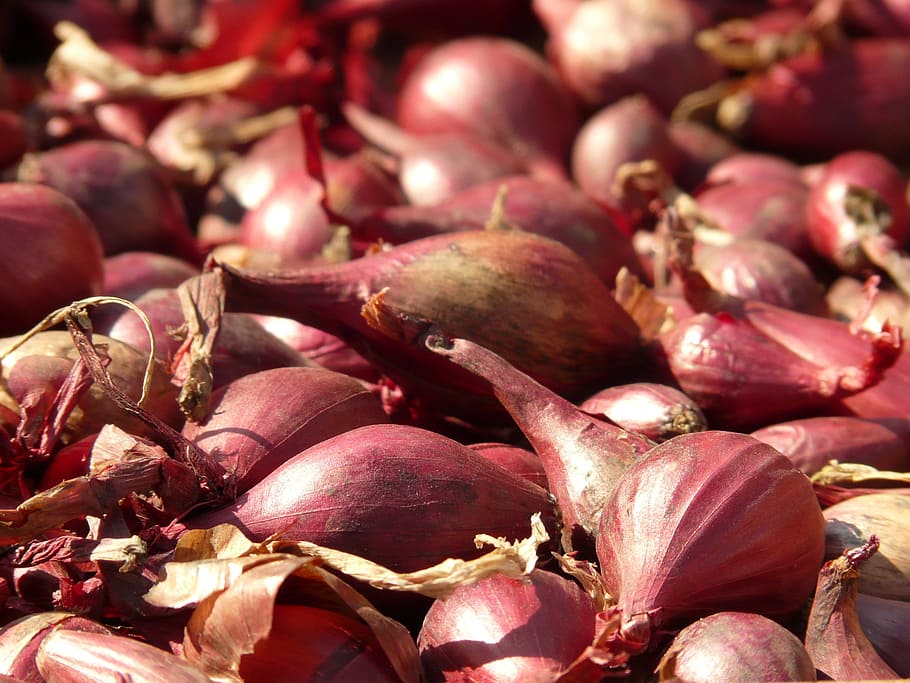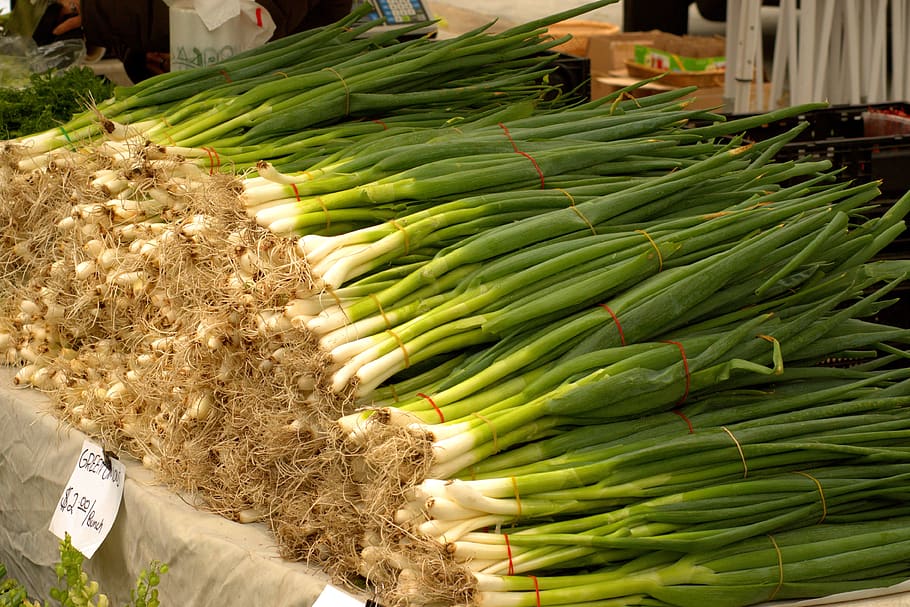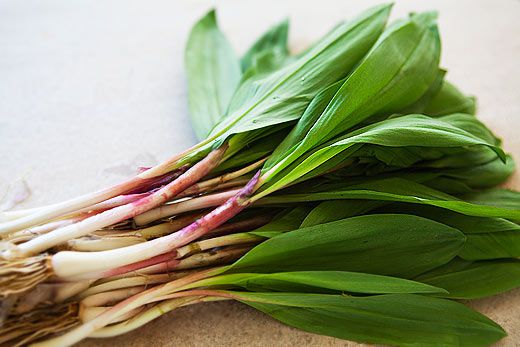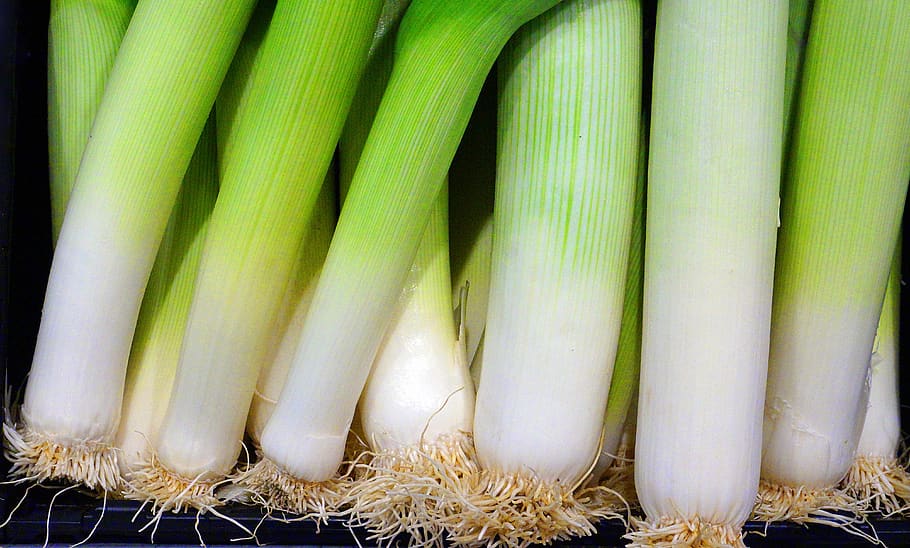Substitutes for Green Onion: 4 Best Alternatives + FAQs!

Green onions are without a doubt one of the most versatile vegetables. They’re fragrant, tasty, and nutritious. It’s a great addition to soups and stir-fried foods, particularly Chinese fried rice. It also adds a nice flavor and scent to a standard egg omelet which is why green onions are always a good choice.
But what if you run out of green onions in the middle of a recipe? Don’t worry; you can easily replace green onions with Shallots, Scallions, Ramps, and Leeks, which can all be found in your kitchen.
Let’s learn more about these alternatives and utilize them in various cuisines.
1. Shallots

Onions are technically shallots. It’s only smaller than the typical onion we find in the market, as you can see by the way it appears. However, its distinct characteristics were once considered a separate species within the “onion family.” You may select shallots in various hues at the market: red, grey, brown, and green blended with white.
Uses
In the kitchen, you may use these onion cousins in various ways. It’s no surprise that it’s utilized mainly in Asia and the rest of the world. Because shallots have a milder flavor than onions, they may be eaten uncooked. These go well with salads and other small bites. It also works well in stir-fries and soup-based recipes. Shallots, like green onions, maybe pickled as well. It’s a great condiment to have on hand, especially in winter.
How to substitute?
The texture and color are the only differences when using shallots instead of green onions. For example, I don’t advocate using it as a fried rice topping. However, you may cook the shallots with the rice before adding it. Shallots will make up for the absence of green onions. The meal wouldn’t even feel like it needed green onions. It’s ideal for sauteing a variety of foods. Use 12 tbsp shallots instead of 2 tbsp shallots as an alternative.
2. Scallions

Green onions and scallions are the same things. The only difference between scallions and green onions is that the scallion’s bulbs are not completely grown. It also has a milder flavor and scent, similar to shallots. It’s no surprise that they have a tight relationship. The scallions’ green leaves may be eaten both raw and cooked. It’s also one of the onion family’s most adaptable veggies.
Uses
Because the leaves may be eaten raw or cooked, they’re virtually ideal for every meal you can think of. To add flavor and perfume to a Mexican salsa, you can use finely sliced scallions. Fresh salads, noodles, seafood stews, and curries benefit from its addition. You may also use it as a salad dressing or a sandwich spread. Scallion-flavored mayonnaise is my particular favorite; it’s delicious! For a delicious flavor and scent, use it with baked bread.
How to substitute?
Green onions and scallions are virtually doppelgangers, with similar qualities that make them difficult to differentiate. As a result, substituting one for the other is simple. To substitute a tablespoon of green onions, use a tablespoon of scallions. You can stick to the 1:1 ratio. It’s also worth noting that green onions have a greater flavor and scent than scallions. If you think the 1:1 ratio isn’t quite right, add a teaspoon to make some tweaks.
3. Ramps

Wild Leek and Wood Leek are two more names for ramps. If you’ve never seen this veggie before, it appears like a whole different onion species. The leaves are similar to maize leaves but smaller and softer. The bulbs aren’t very large or developed. The hue of its bulbs and stalks is similar to a scallion’s, but the color fades into a deep purple ombre. North America, Europe, and Asia are the most common places to find wild leeks.
Uses
This vegetable has a strong garlic and onion flavor that you may use in various ways. It’s no surprise that ramps work well as a garlic alternative. However, it’s an uncommon occurrence because you can only find these fantastic veggies in the wild.
Most home chefs try to preserve it as a pickle to use it all year. It’s also an excellent combination of pan-fried potatoes, egg omelets, scrambled eggs with bacon, and cornbreads. You don’t need to chop the garlic or onions before sauteing them in your recipe. This veggie excels at both tasks.
How to substitute?
We’re killing two birds with one stone with this substitution. You may skip the garlic, onion, or green onion sauté altogether and go straight for the ramps. Just 1 cup of chopped ramps can replace half a cup of mixed green onions and garlic.
It’s pretty straightforward to substitute, and it saves you a lot of time when it comes to chopping garlic and onions. On the other hand, ramps may be scarce in some locations, so if you can find a specialist grocery shop, stock up on this veggie.
4. Leeks

Like shallot, onions, and garlic, Leek is a close cousin. However, if you look at it closely, you’ll find thicker leaves than other green onions. Its leaves are frequently confused with its stalk or stem. However, this isn’t a problem because the entire leaf, whether raw or cooked, is entirely edible. Leeks are typically topping for noodles or soup dishes since they have a milder flavor than green onions.
It adds extra tanginess and crunchiness to the meal when eaten fresh. Unlike other onion vegetables, leeks do not have a strong aftertaste that may turn people away. It’s not just a great topping, but it’s also delicious when deep-fried, like in leek chips. It’s delicious and makes a great appetizer or healthy snack. You may also use it to sauté in place of onions in stir-fried meals.
How to substitute?
Leeks are more prominent, thicker, and broader than other vegetables. You may thinly slice them so they aren’t too large for a mouthful and will blend well with other components. Substitute a tablespoon of thinly sliced leeks for a teaspoon of green onions. It’s impossible to detect the difference. Except it’s larger and a little more crunchy to eat. To amp up the taste, feel free to toss a handful of it into your meal.
My personal choice
I would choose leeks based on my own experience. The leeks have a mild flavor and are an excellent addition to most salads. After eating it uncooked, it does not affect your breath. It’s also simple to include into most cuisines, and the scent is just right to complement the other elements.
It’s not so strong that even your dog won’t be able to manage it. It’s also widely accessible in most supermarkets. You may even purchase a potted plant to cultivate and pluck right in your kitchen. But, regardless of which of the four alternatives we stated above you choose, know that they all function great. Learn to explore and adapt the flavor to your











